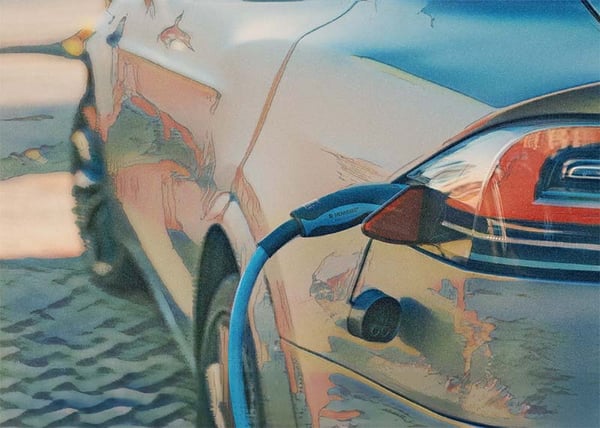Can electric cars help power clean energy grids?
We all know electric vehicles (EVs) as a zero-emission alternative to gas-powered cars, but did you know EVs could function as batteries? A recent study by Eurelectric and EY suggests that by 2030, EVs could provide 114 terawatt hours of battery capacity – enough to power 30 million homes annually.
Normally, when EVs are plugged in, they charge from the grid. However, with new battery and charging tech, EVs can charge bi-directionally. This would allow EVs that are plugged in and fully charged to give some electricity back to the grid as needed.
Picture it's 2035 – every new car sold in Europe is a zero-emission EV, and a much bigger proportion of the energy used to charge those cars comes from wind and solar power. While that all sounds pretty good, there's a hefty engineering challenge to confront.
When the sun shines and people are away from home at mid-day, the grid has too much energy and not enough demand. Later, when the sun has set, and everyone comes home to charge their cars, there's too much demand and little energy available.
Enter vehicle-to-grid charging, allowing EVs to soak up some of the surpluses and give a bit back in times of peak demand. If millions of EVs across the grid engage in bi-directional charging, it could significantly help to balance out energy surpluses and scarcity.
This could also allow EV owners to save on energy bills by effectively selling energy back to the grid. The Eurelectric-EY study found that EV owners in Europe could save €450 to €2,900 annually.
When could bi-directional charging begin? Industry insiders suggest bi-directional charging could be rolled out widely in Europe in the next two to three years.
Steffen Schaefer, Head of Future Cities and Mobility at AFRY Management Consulting, told The European Correspondent, ”Car makers and transmission system operators have demonstrated that their vehicles and the power grid can do it in pilot environments…” But he added that there are regulatory issues, including tax rules, and questions on the business model that need to be cleared up before we'll see it used commercially at scale.

